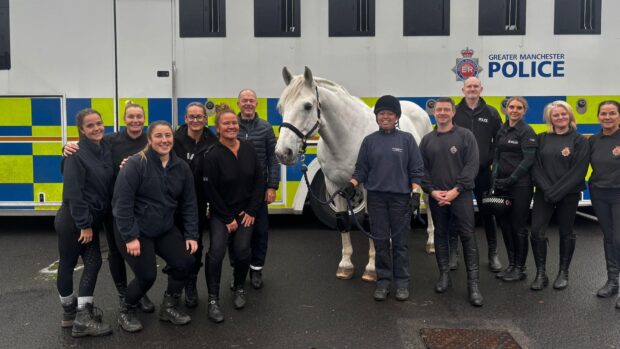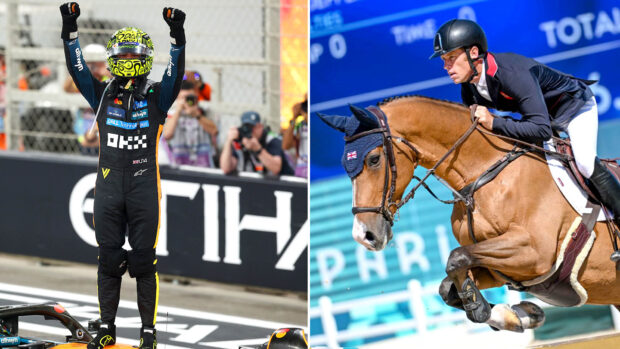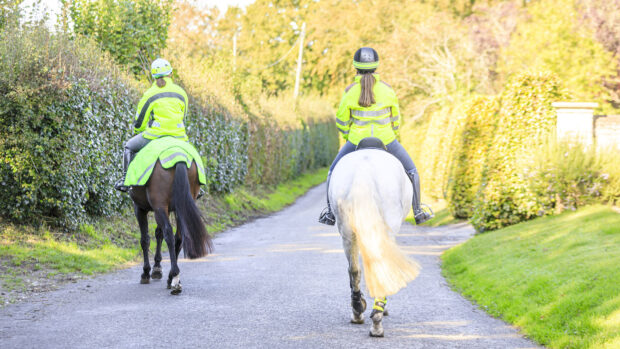Less than a third of the public believes most sport horses live good lives, it has been found, so there is “plenty of work” the equestrian world can do to build widespread trust.
World Horse Welfare’s fourth annual survey of public acceptance of horse sport focused on the perception of equines’ quality of life within sport, and the acceptability of common training methods.
The results of the poll, of 4,600 UK adults, 2% of whom “regularly interact with horses” show little change in overall attitude since the first survey in 2022; 22% do not support involvement of horses in sport at all, 42% support it only if welfare improves and 58% want increased safety and welfare measures. But they “underscore the common sense of the UK public regarding what horses need for a good life”, a World Horse Welfare spokesperson said.
The survey found that 27% of the public believe that most sport horses live good lives, compared to 49% of people who interact with horses. Only 5% believe “all sport horses live good lives”, and 8% of equestrians.
The majority of the public (62%) believe it is important sport horses have contact with other equines and rest after competitions (64%). Nearly half (45%) recognise the importance of spending time turned out.
“Those who regularly interact with horses were more likely than the general public to believe that it was important to a sport horse to go to competitions (17% vs 8%), win competitions (12% vs 6%) and be ridden (35% vs 21%),” the spokesperson said. “This could be due to equestrians believing that their horses enjoy their work and competing, though there is not yet any concrete evidence that they do.”
Whip and spur use
There was very little support among the public for light use of a whip (21%), spurs (11%) or strong leg or rein pressure (7%). Only 3% of the public think using a whip with force is acceptable, or using fear or pain to train horses.
“When asked what training methods were acceptable, the public again appear to have good instincts about the importance of rewards, use of a soft voice, light pressure on the reins or horse’s side, but they do not seem to like the use of the whip, even for light tapping,” said World Horse Welfare CEO Roly Owers at a briefing to reveal the findings.
“Horse people were more likely to understand the use of light pressure to train a horse, but somewhat worryingly, a notable proportion were also more complacent about using a loud voice, using a whip with force and using pain or fear to train a horse. These practices, of course, are unethical and not supported by the public.”
In terms of building trust that sport horses do live good lives, over half of the public (53%) cited unannounced welfare inspections of equestrian training facilities and mandatory welfare education for all involved with sport horses (51%).
“The UK public has an instinctive common sense about what horses need to have a good life, including having contact with other horses and the ability to make choices for themselves,” Mr Owers said. “But the vast majority do not believe that all sport horses live good lives, so there is plenty the horse world can do to build that trust. We hope today’s event sheds light on where opinions between the public and the horse world differ and what we can do to bridge that gap.”
- To stay up to date with all the breaking news from major shows throughout 2025, subscribe to the Horse & Hound website
You may also be interested in:

Involvement of horses in sport is ethically ok, research finds

‘It’s decisive for the future of the sport’: top stud to withdraw its horses from dressage competitions amid welfare reforms

Subscribe to Horse & Hound magazine today – and enjoy unlimited website access all year round




